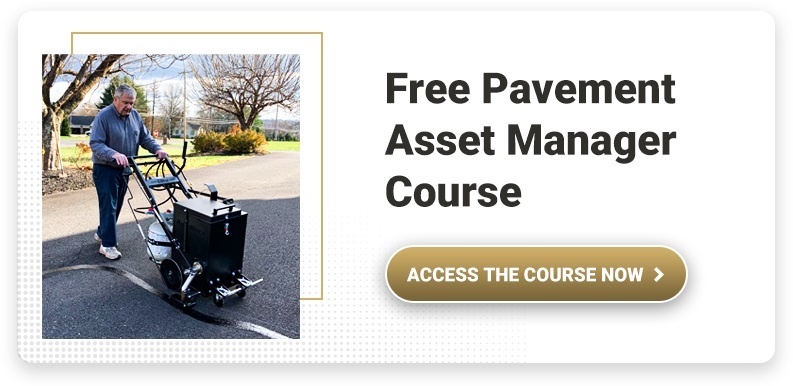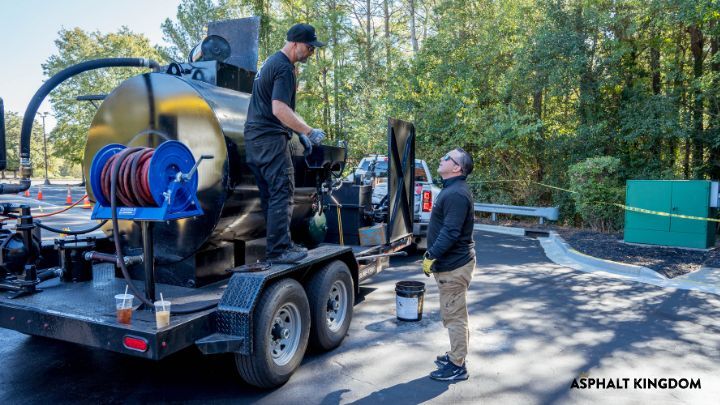Parking lots. You might think they're one of the safest places on your property (cars are mostly stationary and people usually drive at lower speeds), but they're not.
According to the National Safety Council, parking lots are some of the riskiest areas for drivers and pedestrians alike. The main cause of accidents is distracted driving, but many mishaps can also be attributed to damaged and improperly maintained parking lots.
These accidents are costly not only for you and your patrons. Worse, they can also cause injuries or even deaths.
There's nothing much you can do with distracted driving, but pavement safety is something you can control and should be your priority. Here are four asphalt maintenance tasks you can do to prevent parking lot accidents.
1. Fix alligatored asphalt
Also called fatigue cracking, alligator cracks are caused by poor pavement design, excessive traffic load, insufficient compaction, etc. Alligatored asphalt is usually the first sign that something's wrong with a section of your parking lot. To prevent dangerous potholes from forming, we recommend that you have alligatored cracks fixed ASAP.
For your convenience, we recommend that you hire an asphalt maintenance contractor to patch those cracks. But alligator cracks are so easy to fix that you or your employees can do it, too.
How do you fix alligator cracks, prevent potholes, and keep your parking lot safe?
It's simple.
All you need is a product called Gator Patch, a trowel, a squeegee, and a broom.
- After cleaning the alligatored section with a broom, put a moderate amount of Gator Patch on the cracks and spread it using a trowel.
- Use a squeegee to spread the product over wider alligatored areas, and make sure every inch is covered sufficiently.
- Let it dry before applying a second coat.
Watch this video to learn how to apply Gator Patch:

This DIY patch and seal package gives you everything needed to repair up to 300 square feet of gator cracks, along with sealcoat to protect your asphalt investment.
Related: How a Mobile Home Park Community Manager Extended the Lifespan of the Property's Pavement Asset
2. Fix all cracks and potholes
What if you took over a property that already has extensive potholes and large cracks? Then call your favorite asphalt maintenance specialist soon, as these could be a liability if left neglected. Imagine someone driving into a pothole and damaging their car. Or someone using their phone while walking, and they stepped on the pothole, tripped, and sprained their ankle.
Not keen on paying someone else to do the job? Then do it yourself — it's easy and cost-efficient.
Shallow and narrow cracks can be fixed with liquid crack fillers, while larger ones can be repaired with rubberized crack fillers. But for this to work, you have to invest in crack filling machines or a crack sealer melter oven and a crack pour pot.
What about potholes? Potholes can be fixed with patches like Aquaphalt 6.0 Concrete and Asphalt Patch and Cold Asphalt Patch. Simply pour the product into the pothole, tamp it down, and voila! Pothole repaired.
3. Apply asphalt sealer regularly
Asphalt parking lots are exposed to traffic and the elements day in and out. Over time, the repeated load and the elements can cause cracks in the asphalt. These cracks allow water into the foundation, which can erode it later on and cause further damage.
But the good news is you can protect your parking lot by having it sealcoated every two or three years.
Sealcoating serves as a protective film on top of asphalt, preventing rain and meltwater from entering the cracks that may be present in the asphalt. It's not just for the asphalt's protection, though. Sealer can also bring back its matte black finish and improve your parking lot's curb appeal.
Related: How to Prevent Parking Lot Accidents in Winter
4. Hire a contractor to conduct parking lot line striping
Parking lot lines are not just a way to ensure each customer or tenants' car sits in a specific spot. They're also painted to ensure that your patrons can navigate the parking lot safely and prevent them from getting into accidents or altercations with fellow customers. They also ensure that there are accessible spaces for people with disabilities.
As a business owner or facility manager, you are obligated to have your parking lot painted with lines before customers can use it.
If you simply need to repaint over the existing lines, this can be a DIY project your facility manager can take on.
Hint: We have a free line striping course that explains the ins and outs of parking lot striping.
But if you have a large parking lot or need a new parking lot layout, we recommend you hire a professional line striper. There are line striping dimensions and rules you need to follow. Professional contractors will have the line striping equipment needed to get the job done fast, meaning you can open your parking lot sooner than later.
Does your property have faded parking lot stripes and signs? Have them repainted to lessen the chances of accidents happening in your parking lot.
Conclusion:
We hope that you have learned a lot in this blog. Parking lot accidents in commercial properties, such as airports and storage facilities, are fairly common. But that doesn't mean they can't be prevented. Read our airport and storage facilities case studies to see how these property owners have prevented costly mishaps, saved money, and prolonged the lifespan of their asphalt simply by maintaining their asphalt.
If you have questions about crack filling, pothole patching, and sealcoating materials and equipment for your parking lot, simply give us a call or send us a message. We're always happy to help.







-2.jpg)
-1.jpg)